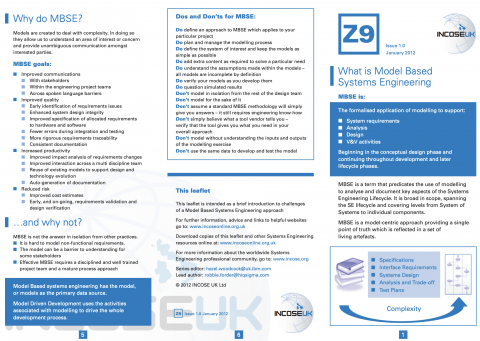Architecting processes capture elements, relationships, and
attributes that are needed to describe a system architecture
which forms a variety of viewpoints that address stakeholder
concerns [see Z8 System Architecture]. It is the Systems
Engineer’s job to assimilate all these into one coherent
representation, or model, of reality.
Models are commonly used to describe or capture the
architecture. Equally the data contained within architectural
descriptions feeds into models that aid the understanding
of system structure or performance, such as simulation or
a decomposition of functions.
A high level system model can be built, which allows the
collaborating team to visualize the entire system and the
surrounding environment. Following decomposition into
sub-functions or components, models can then be used to
map onto physical architectures. This allows validation of
the resulting system to take place and for the customers /
users to more clearly see their vision earlier than would
otherwise be possible.
The models can be used as integration test benches to
support Integration, Verification and Validation testing
throughout the SE lifecycle.
Defines standard
Replaced/Superseded by document(s)
Cancelled by
Amended by
| File | MIME type | Size (KB) | Language | Download | |
|---|---|---|---|---|---|
| Z9_model_based_WEB.pdf | application/pdf | 844.3 KB | English | DOWNLOAD! |

